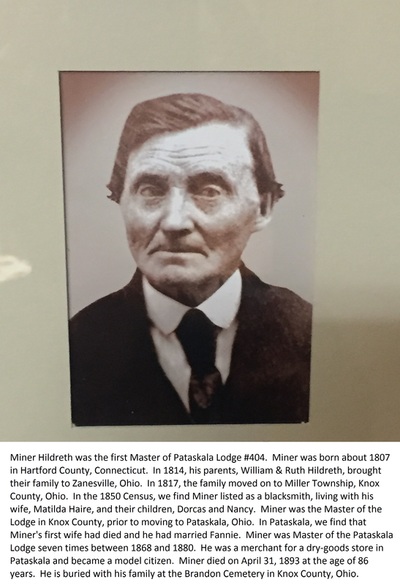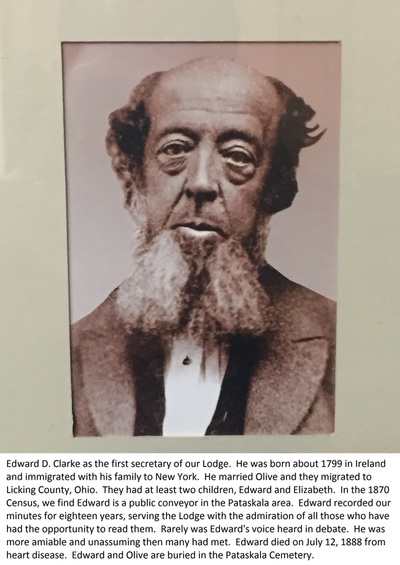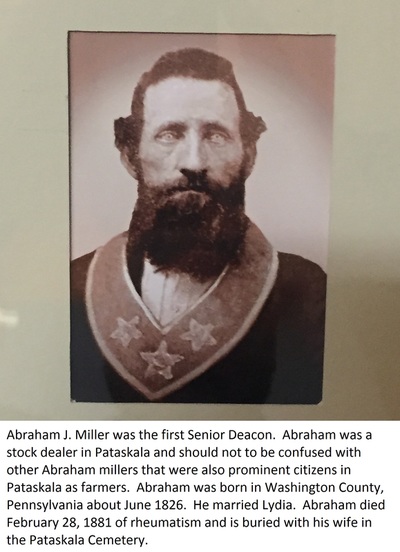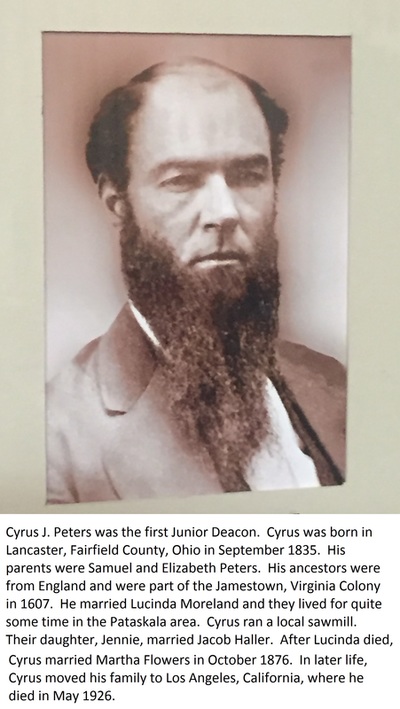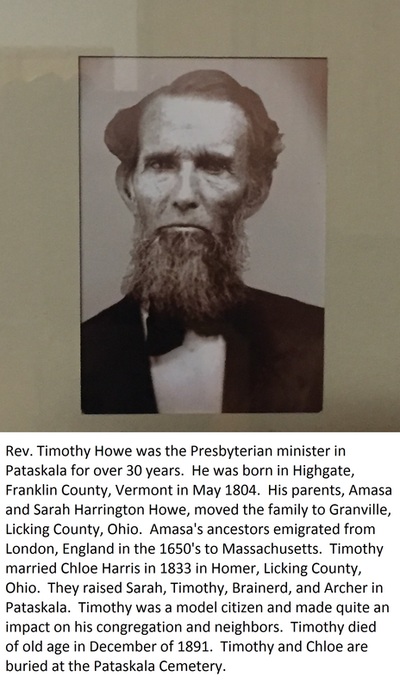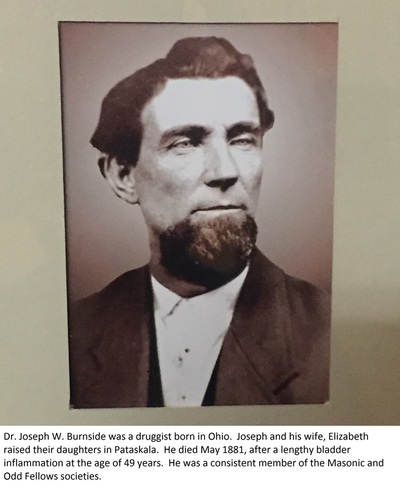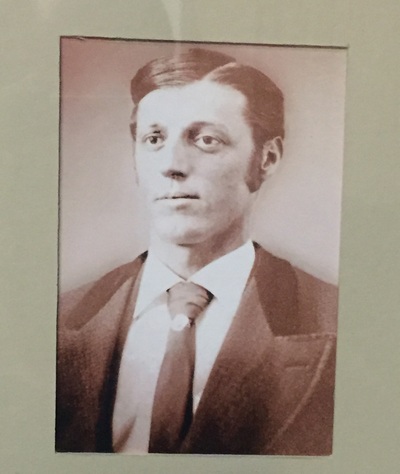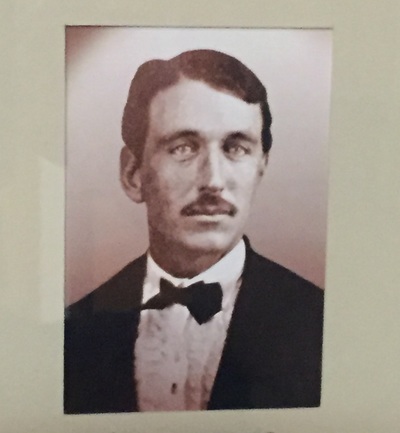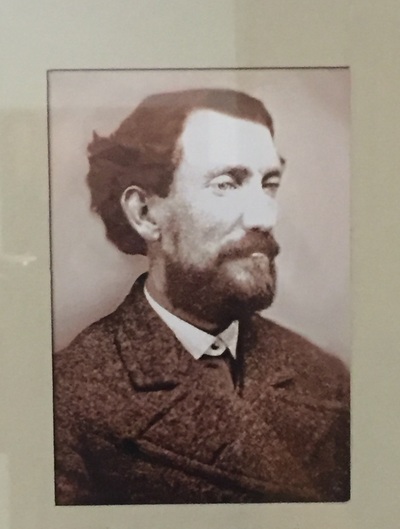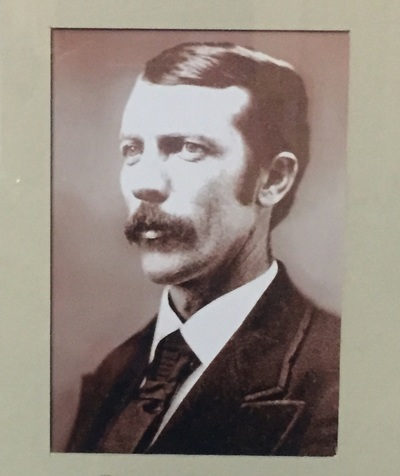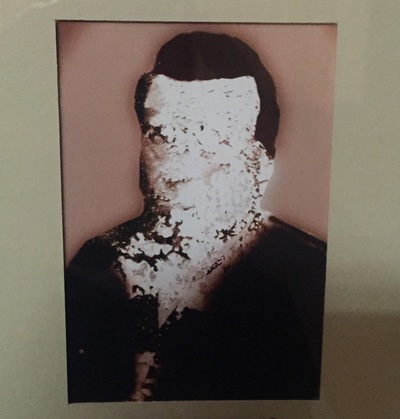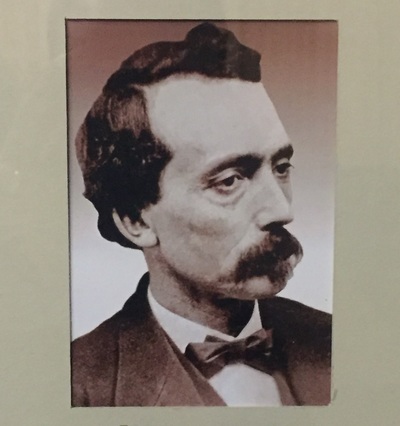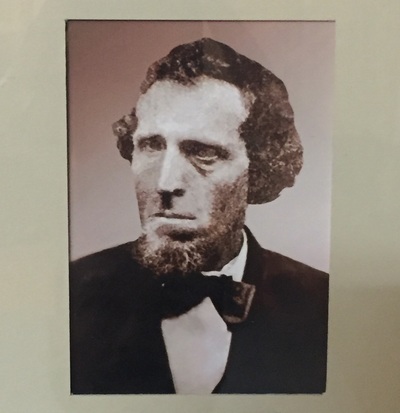In the year 1868, the United States was still recovering from the Civil War…
- U.S. Grant was elected President of the United States of America
- The first Memorial Day was observed
- Andrew Johnson was impeached
- The Territory of Wyoming was created
- The typewriter was patented
- Fleischmann’s Yeast was invented
- Pataskala Masonic Lodge #404 was chartered
Historical Sketch of the Pataskala Masonic Lodge (written in 1968)
The beginning of the year 1868 found among the citizens of Pataskala a number of Master Masons, in good standing in their respective Lodges, but desirous of being organized into a local Lodge; that they might continue to improve themselves by being able to attend regular convocations, and give that opportunity to others who on application might be found worthy of becoming participants in the ancient rites and mysteries of Freemasonry.
This group obtain financing by personal donations and from civic minded Masons and friends, some of whom later dimitted or were initiated into the Lodge. The original members, their trades and recorded donations are as follows: Miner Hildreth, Christian Elsass, $25.00; Ezra Whitehead, farmer, $25.00; William E. Atkinson, farmer, $20.00; Samuel Stone, $10.00; Medical Dr. Joseph Burnside; harness maker, leather and shoe cobbler, George W. Taylor; Presbyterian minister (in Pataskala for 35 years), Rev. Timothy Howe; Abraham J. Miller, farmer on the Creek Rd. S. W. (Rt. 151), $10.00; timber and sawmill man, Cyrus J. Peters; and a farmer, notary public and bookkeeper from Ireland, Edward D. Clarke.
Other contributors were as follows: Medical Dr. D. S. Mills of Jersey, $25.00; George Holmes, $20.00; Bro. Phil Tharp, $10.00; G. W. Beem, $10.00; Edward R. Clarke (son of Edward D. Clarke), $10.00; George Wickliffe, $5.00; L. Humphrey, $5.00; and John C. Jones, $5.00
It should be noted that these were not small donations in those days, neither was it a small task to organize and secure the financing for such a move considering the tremendous amount of manual labor involved in just making a living; and the slow transportation / communications of those times. Many an instruction or discussion was held on a moonlight buggy ride, where the only eavesdroppers were the horses and the roadside vegetation.
A petition signed by our organizational group “praying to be congregated into a regular Lodge,” secured from the Most Worshipful Grand Master, Howard, Mathews, a dispensation, given under his hand and seal at Cincinnati dated January 8, 1868 “authorizing our trusty and well-beloved brethren aforesaid, to form and open a Lodge after the manner of Free and Accepted Masons, to be called Pataskala Lodge.” Said dispensation to be in effect until the next meeting of the Grand Lodge. Under this dispensation, the first three named brethren were appointed in that order, to act as W.M., S.W., and J. W. This Lodge U.D. was first convened by P.M. William M. Cunningham, District Lecturer, on January 17, 1868.
That these busy worthy brethren were in earnest is evidenced by the fact that, while under dispensation, four new members were added to their number “by being initiated, passed and raised to the sublime degree of Master Mason.” These were Wm. R. Mills, Geo. D. Wickliff, Philip Tharp, and Marcus Root, making a total of 15 charter members.
In due time it pleased the Grand Lodge in session at Dayton, to issue a Charter to Pataskala Lodge No. 404 dated October 21, 1868, giving it permanent power to “initiate good men and true, who may apply to become acquainted with the sublime principles of the several degrees.”
The Lodge was formally instituted November 5, 1868, and officers were elected as follows: (Worshipful Master) Miner Hildreth; (Senior Warden) Ezra Whitehead; (Junior Warden) Cyrus J. Peters; (Senior Deacon) Abraham Miller; (Junior Deacon) Wm. R. Mills; (Secretary) Edward D. Clarke; (Treasurer) Joseph W. Burnside; and (Tyler) George D. Wickliffe. These officers were installed by Bro. S. Stacker Williams of Center Star Lodge No. 11, who was especially deputized Grand S.W. for that purpose.
The beginning of the year 1868 found among the citizens of Pataskala a number of Master Masons, in good standing in their respective Lodges, but desirous of being organized into a local Lodge; that they might continue to improve themselves by being able to attend regular convocations, and give that opportunity to others who on application might be found worthy of becoming participants in the ancient rites and mysteries of Freemasonry.
This group obtain financing by personal donations and from civic minded Masons and friends, some of whom later dimitted or were initiated into the Lodge. The original members, their trades and recorded donations are as follows: Miner Hildreth, Christian Elsass, $25.00; Ezra Whitehead, farmer, $25.00; William E. Atkinson, farmer, $20.00; Samuel Stone, $10.00; Medical Dr. Joseph Burnside; harness maker, leather and shoe cobbler, George W. Taylor; Presbyterian minister (in Pataskala for 35 years), Rev. Timothy Howe; Abraham J. Miller, farmer on the Creek Rd. S. W. (Rt. 151), $10.00; timber and sawmill man, Cyrus J. Peters; and a farmer, notary public and bookkeeper from Ireland, Edward D. Clarke.
Other contributors were as follows: Medical Dr. D. S. Mills of Jersey, $25.00; George Holmes, $20.00; Bro. Phil Tharp, $10.00; G. W. Beem, $10.00; Edward R. Clarke (son of Edward D. Clarke), $10.00; George Wickliffe, $5.00; L. Humphrey, $5.00; and John C. Jones, $5.00
It should be noted that these were not small donations in those days, neither was it a small task to organize and secure the financing for such a move considering the tremendous amount of manual labor involved in just making a living; and the slow transportation / communications of those times. Many an instruction or discussion was held on a moonlight buggy ride, where the only eavesdroppers were the horses and the roadside vegetation.
A petition signed by our organizational group “praying to be congregated into a regular Lodge,” secured from the Most Worshipful Grand Master, Howard, Mathews, a dispensation, given under his hand and seal at Cincinnati dated January 8, 1868 “authorizing our trusty and well-beloved brethren aforesaid, to form and open a Lodge after the manner of Free and Accepted Masons, to be called Pataskala Lodge.” Said dispensation to be in effect until the next meeting of the Grand Lodge. Under this dispensation, the first three named brethren were appointed in that order, to act as W.M., S.W., and J. W. This Lodge U.D. was first convened by P.M. William M. Cunningham, District Lecturer, on January 17, 1868.
That these busy worthy brethren were in earnest is evidenced by the fact that, while under dispensation, four new members were added to their number “by being initiated, passed and raised to the sublime degree of Master Mason.” These were Wm. R. Mills, Geo. D. Wickliff, Philip Tharp, and Marcus Root, making a total of 15 charter members.
In due time it pleased the Grand Lodge in session at Dayton, to issue a Charter to Pataskala Lodge No. 404 dated October 21, 1868, giving it permanent power to “initiate good men and true, who may apply to become acquainted with the sublime principles of the several degrees.”
The Lodge was formally instituted November 5, 1868, and officers were elected as follows: (Worshipful Master) Miner Hildreth; (Senior Warden) Ezra Whitehead; (Junior Warden) Cyrus J. Peters; (Senior Deacon) Abraham Miller; (Junior Deacon) Wm. R. Mills; (Secretary) Edward D. Clarke; (Treasurer) Joseph W. Burnside; and (Tyler) George D. Wickliffe. These officers were installed by Bro. S. Stacker Williams of Center Star Lodge No. 11, who was especially deputized Grand S.W. for that purpose.
Founding Members
(Not Pictured)
|
Christian Elsass was the first Senior Warden. Christian was born in France about 1823. About a year after signing the Charter, Christian moved his family to Franklin, Ripley County, Indiana. Children of Christian and his wife, Eliza were George, Ida Bell, and Lizzie. Our Records show that in 1879, Christian wrote a letter requesting the $25 he had lent the Lodge to help get it started. The money was returned to him over a period of two years. He was buried in the Franklin Church Cemetery in an unmarked grave.
|
|
Ezra L. Whitehead was the first Junior Warden. In the 1850 Census, we find Ezra living with his parents, Abram & Mary Whitehead) and his siblings in Lima Township, Licking County, Ohio. His father was from Maryland. Ezra enlisted in the Union Army in August of 1862 at the age of 21. He received the Distinguished Service Award. He married Hattie Clark in March of 1886. By the 1870 Census, we find Ezra as a shoemaker living with his parents in Franklin County, Ohio. Ezra and Hattie were the parents of Pearl, Ray, Carl, and Claire. Ezra was Master of the Lodge in 1876.
|
|
William E. Atkinson was the first Treasurer. William was born in West Virginia about 1833. William was the county recorder for Licking County for many years, where he lived in Newark, Ohio. He was a useful member of the Newark Board of Education, as well as serving as Superintendent of the Newark Glass Works. William and his wife, Marietta, were the parents to Alice, Nathan, and William. He was an ardent Democrat and a sincere, consistent man in every respect. For some years prior to his death in March of 1899, he lived with his family on a farm near Pataskala. He had a long illness of chronic diarrhea and was buried at the Pataskala Cemetery. His obituary stated that he was a man of fine business abilities and thoroughly honorable and upright.
|
|
George W. Taylor was the first Tyler. George was a carriage trimmer originally from New Jersey. He was born May of 1824. George Married Mary Condit and they had several children. George died June 30, 1896 and is buried with his wife at the Pataskala Cemetery.
|
|
Samuel A. Stone was one of the first members. He was born June of 1808 in Ohio and his parents were originally from Virginia. in the 1870 Census, he was listed as a retired farmer owning a property worth $20,000. By the 1880 Census, Samuel had married Louise, who was some 20 years his younger. Samuel died in January 1886 of typhoid fever. Samuel and Louise are buried at the Pataskala Cemetery.
|
|
Phillip Tharp was born in Lima Township, Licking County, Ohio in April 1827. His father, Isaac, settled in the area about 1820 from New Hampshire County, West Virginia. He was a township trustee fro 21 years. He married Mary Swygert in January 1848. They raised two sons, G. W. and William. He was a lifelong Democrat and an avid reader. He resided on the same farm (near Summit Station) most of his life, until his death in July 1906. Phillip and Mary were buried at the Swisher Cemetery in Licking County, Ohio.
|
A Few More Good Men
|
Richard Conine served the Lodge as secretary from 1889 until his death on July 26, 1921. Richards forefathers were of German decent. In 1822, they migrated from New Jersey to this area. In 1851, they founded the village of Conine, which is now known as Pataskala.
|
|
Laurence C. Lynd was born in Lawrence County, Ohio in 1910. He was a 32nd Degree Master Mason, co-founder of the Pataskala Lions Club, founder of the Ohio Container Company, partner of Hub Plastics, philanthropist and inventor. Larry and Eunice were married for 66 years. He died on February 23, 2006.
|
|
Helmer Orton Krehbeil was born in August of 1913 in New York. His grandfather emigrated from Germany and was a doctor by profession. Helmer's father Junius was a ceramist who brought his family to Pataskala and opened their business. Helmer was a Charter Member of the Pataskala Lion's Club. He was a mentor to Ohio State Representative, Chalmers P. Wylie and with Chalmers persistence, Helmer started Boy Scouts Troop #21 in Pataskala. He donated land for a cabin to be built on for the troop. Helmer mentored over 70 Eagle Scouts and started an additional 21 Boy Scouts troops in the area. In March of 2003, Helmer was presented the Daniel Carter Beard Masonic Scouter Award. This award is presented to a Master Mason who demonstrates significant service to youth through the Boy Scouts.
|
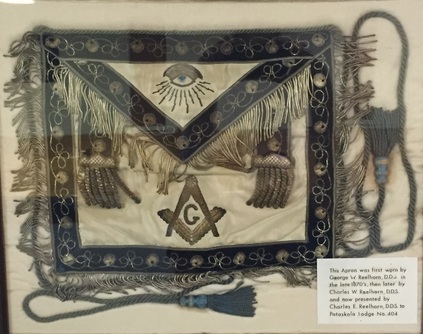 The caption reads: "This apron was first worn by George W. Reelhorn, D.D.S. in the late 1870's, then later by Charles W. Reelhorn, D.D.S. and now presented by Charles E. Reelhorn, D.D.S. to Pataskala Lodge #404"
The caption reads: "This apron was first worn by George W. Reelhorn, D.D.S. in the late 1870's, then later by Charles W. Reelhorn, D.D.S. and now presented by Charles E. Reelhorn, D.D.S. to Pataskala Lodge #404"
The early history of the Lodge was marked by controversies concerning jurisdiction. Numerous joint conferences and frequent correspondence appear in the early records in attempts to establish boundary lines with neighboring Lodges. The most serious contentions were with the older Lodges established along the National Road, formerly Cumberland Road, now a mixture of U.S. Highway 40, State Highway 440 and roughly parallel to the (in process of construction) interstate Route I-70. By constant efforts and skillful diplomacy on the part of the arbiter appointed, all questions were amicably settled and later relations with these Lodges have been most cordial.
The first meeting place of the newly organized Lodge was in the frame building known as the Thayer Block, which stood on the corner where later Baird Brothers’ Business Block was built. Since that time the streets of Pataskala have been marked and this old Baird Brother’s Building still stands on the S.W. corner of Main and Depot Street.
When Jesse S. Green built the brick building north of the railroad, a room was especially planned for use as a Masonic Lodge. This is the building on the S.E. corner of Cedar St. and Vine St. which in 1910 was used as the Merrill Mead ice house. At this writing (circa 1968) it has been used for the past 25 years of so as a part of Mr. Edgar Hulls wrecking and salvage yard and at this writing is crumbling into a sad state. Beginning Nov. 7, 1871, this was the home of the Order until Jan. 20, 1891, except during intermittent periods when the room was not available, the Lodge was held in the old North Side School Building (now known as No. 80 N. High St.) or in the Burnside Building (S.W. corner of Main St. and Walnut St.) The former is converted to a residence and the latter was in 1904 J. L. Moore’s furniture store, and progressively Medical Dr. Robert Haubrich’s office, Brother Robert Mauger’s accounting service, and Brother Glenn Erskine’s insurance agency.
In January 1891, the room on the second floor of the Ab Joseph Building (north side of Depot St. near the corner of Jefferson St.) was secured on account of its more central location, and in this place (now long gone, replaced by a building housing Ned Bowie’s locker plant and store, now the Pataskala Banking Co.’s. parking lot) masonry held forth until the erection of the Post Office Building.
The Post Office Building (on the east side of Main St. midway between the B&O railroad and Depot St.) had the entire second floor, planned by Merrill Mead, as (then) “commodious” quarters to be used exclusively for Pataskala Lodge. The rental agreed upon was $75.00 per year and a 10-year lease was acquired. On moving into the new room January 13, 1903, a complete outfit of modern Lodge furniture and paraphernalia was purchased; which made Pataskala Lodge “one of the best equipped and most comfortably quartered country Lodges in the State.”
The building’s first floor was jointly occupied by the Post Office and the Pataskala Standard newspaper and printing office under the proprietorship of Wm. S. Needham, Sr. The post office was moved out in 1915, but the “Standard” Printing Co. has continued here under Bro. Harold M. Needham; and since 1955, under the direction of Mr. Tom Caw.
Most of the Lodge paraphernalia is gone (new robes, etc. in 1948) but most of the furniture is still being used in the present lodge hall. In 1951, Pataskala Lodge took a big step in its history; they became property owners. Having outgrown their “commodious” rental quarters; under W. Bro. Arnold Lynd and spearheaded by W. Bro. D. Ludwig Linke (then J.W.); using the same techniques as our founding fathers, they “took up a collection” and realized a down payment on the Baird Brothers Business Block Building. On April 7, 1953, after an extensive renovation by the OES Chapter and the Lodge brethren, the first Lodge meeting was held in the new room.
These parallels should be noted; curiously enough in 1952 the Lodge borrowed approximately $3,500.00 to set themselves up on the same spot where they had, 83 years previously, borrowed $210.00 and organized the Lodge.
Items of expense in 1868 were: 1 pair Drawers $0.90, wood $0.75, spittoons $6.25 (Editor’s note: wonder what happened to these venerable objects?) District Lecturer $2.00, Canvas $5.00. Current items of expense as the Lodge approached its centennial in 1968 were: Candidate suit $19.95, supplies for maintenance of Lodge rooms $125.00, insurance on building and contents total $394.00, real estate taxes $310.98, refreshments (per year budget) $250.00, Canvas $50.00.
Other Historical Highlights
The first meeting place of the newly organized Lodge was in the frame building known as the Thayer Block, which stood on the corner where later Baird Brothers’ Business Block was built. Since that time the streets of Pataskala have been marked and this old Baird Brother’s Building still stands on the S.W. corner of Main and Depot Street.
When Jesse S. Green built the brick building north of the railroad, a room was especially planned for use as a Masonic Lodge. This is the building on the S.E. corner of Cedar St. and Vine St. which in 1910 was used as the Merrill Mead ice house. At this writing (circa 1968) it has been used for the past 25 years of so as a part of Mr. Edgar Hulls wrecking and salvage yard and at this writing is crumbling into a sad state. Beginning Nov. 7, 1871, this was the home of the Order until Jan. 20, 1891, except during intermittent periods when the room was not available, the Lodge was held in the old North Side School Building (now known as No. 80 N. High St.) or in the Burnside Building (S.W. corner of Main St. and Walnut St.) The former is converted to a residence and the latter was in 1904 J. L. Moore’s furniture store, and progressively Medical Dr. Robert Haubrich’s office, Brother Robert Mauger’s accounting service, and Brother Glenn Erskine’s insurance agency.
In January 1891, the room on the second floor of the Ab Joseph Building (north side of Depot St. near the corner of Jefferson St.) was secured on account of its more central location, and in this place (now long gone, replaced by a building housing Ned Bowie’s locker plant and store, now the Pataskala Banking Co.’s. parking lot) masonry held forth until the erection of the Post Office Building.
The Post Office Building (on the east side of Main St. midway between the B&O railroad and Depot St.) had the entire second floor, planned by Merrill Mead, as (then) “commodious” quarters to be used exclusively for Pataskala Lodge. The rental agreed upon was $75.00 per year and a 10-year lease was acquired. On moving into the new room January 13, 1903, a complete outfit of modern Lodge furniture and paraphernalia was purchased; which made Pataskala Lodge “one of the best equipped and most comfortably quartered country Lodges in the State.”
The building’s first floor was jointly occupied by the Post Office and the Pataskala Standard newspaper and printing office under the proprietorship of Wm. S. Needham, Sr. The post office was moved out in 1915, but the “Standard” Printing Co. has continued here under Bro. Harold M. Needham; and since 1955, under the direction of Mr. Tom Caw.
Most of the Lodge paraphernalia is gone (new robes, etc. in 1948) but most of the furniture is still being used in the present lodge hall. In 1951, Pataskala Lodge took a big step in its history; they became property owners. Having outgrown their “commodious” rental quarters; under W. Bro. Arnold Lynd and spearheaded by W. Bro. D. Ludwig Linke (then J.W.); using the same techniques as our founding fathers, they “took up a collection” and realized a down payment on the Baird Brothers Business Block Building. On April 7, 1953, after an extensive renovation by the OES Chapter and the Lodge brethren, the first Lodge meeting was held in the new room.
These parallels should be noted; curiously enough in 1952 the Lodge borrowed approximately $3,500.00 to set themselves up on the same spot where they had, 83 years previously, borrowed $210.00 and organized the Lodge.
Items of expense in 1868 were: 1 pair Drawers $0.90, wood $0.75, spittoons $6.25 (Editor’s note: wonder what happened to these venerable objects?) District Lecturer $2.00, Canvas $5.00. Current items of expense as the Lodge approached its centennial in 1968 were: Candidate suit $19.95, supplies for maintenance of Lodge rooms $125.00, insurance on building and contents total $394.00, real estate taxes $310.98, refreshments (per year budget) $250.00, Canvas $50.00.
Other Historical Highlights
- In 1964, the Lodge retired its first mortgage and was beginning to think of acquiring a piece of land for a future lodge site.
- In 1907, W. Bro. John Friend and those line of officers behind him, held their respective stations and places to allow W. Bro. Elwood Joseph to serve as Master of the Lodge; thereby qualifying him for his subsequent nomination for the 33rd degree in Scottish Rite Masonry.
- On December 20, 1904, a public installation of officers (by invitation) was held. This practice was subsequently determined “not appropriate” and no more “open installations” were held until Dec. 1966.
- In 1896, the Lodge conferred the three degrees in one day on one candidate (by error of dispensation from the Grand Master of Ohio). For many years following, Pataskala Lodge #404 held the “distinction” of being perhaps the only Lodge in any state that was permitted to confer all three Masonic degrees to a single candidate in one day. Bro. Jesse F. Handley, who was desirous of moving west, had made application to the Lodge. The Lodge secretary took the matter up with the Grand Master, Barton Smith, who evidently overlooked a certain Article of the Constitution, which restricted his power in granting dispensation to anyone to confer the three degrees in less time than the Masonic Code prescribed. Upon discovery of the error, the Grand Master contacted District Lecturer Sedgwick of Newark, Ohio but he was too late to prevent the conferring of the three degrees in one day.
- In 1871, the Lodge moved its meeting place, rather than accept its landlord as a member.
- In 1870, the Lodge was granted (by order of the Grand Lodge) property of the library of old Etna Lodge No. 212 (which had surrendered its charter in 1860).
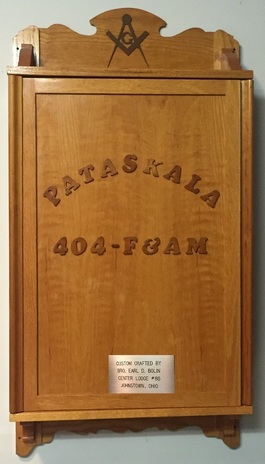
WWI Servicemen of Pataskala Lodge #404
Carleton Atkinson Henry C. Atkinson Hollie M. Brown
Earl F. Baum Arlie R. Dixon H.E. Dickerson
Harry S. Farber Henry B. Frankenberg Hugh C. Hancock
Neal Johnson Ralph G. Johnson Stanton King
Stanley Miller Guy W. Miller Virgil E. Mauger
Charles B. Mauger Gene R. Mauger James K. Morrow
William S. Needham, Jr. Leverett B. VanDorn Chalmers R. Wilson
Charles N. Wells James B. Williams
Historical Membership Statistics
Membership in 1868 15
Membership in 1899 55
Membership in 1932 189
Membership in 1968 247
Membership in 2007 169
Membership in 2015 129
Members raised in 1868
(Under dispensation) 5
Members raised in 1904 9
Members raised in 1932 2
Member raised in 1967 7
Members raised in 2015 2
Carleton Atkinson Henry C. Atkinson Hollie M. Brown
Earl F. Baum Arlie R. Dixon H.E. Dickerson
Harry S. Farber Henry B. Frankenberg Hugh C. Hancock
Neal Johnson Ralph G. Johnson Stanton King
Stanley Miller Guy W. Miller Virgil E. Mauger
Charles B. Mauger Gene R. Mauger James K. Morrow
William S. Needham, Jr. Leverett B. VanDorn Chalmers R. Wilson
Charles N. Wells James B. Williams
Historical Membership Statistics
Membership in 1868 15
Membership in 1899 55
Membership in 1932 189
Membership in 1968 247
Membership in 2007 169
Membership in 2015 129
Members raised in 1868
(Under dispensation) 5
Members raised in 1904 9
Members raised in 1932 2
Member raised in 1967 7
Members raised in 2015 2
CREDITS
The majority of the historical excerpts contained herein were copied from the “Masonic History and Directory” produced for the 1968 Centennial of the Pataskala Lodge #404. That publication was said to be “the third comprehensive history of Pataskala Lodge known to have been published; the first evidently written by Secretary Brother Richard Conine in 1904 and the second attributed to W. Brother Secretary Walter E. Norris in 1931-32.”
The information contained therein was assembled by and all credit should be given to a committee of our Brethren consisting of Ray Wallace, Jr., Samuel Lowery, R. Everett Wolcott, and Eugene Burkey, without whom, through their research and dedication to our beloved Lodge, many of these facts and figures may have been lost to history.
Additional historical information presented on this website has also been included from a publication entitled “Pataskala #404, 1868-2008, Brothers in the Making,” by specific members not provided; however, much of the data was attributed to the following source contributors:
Minor grammatical alterations have been implemented throughout the transcription of these texts, where modern language rules applied or where necessity required for ease of the reader’s use; however, the core text and meanings imparted remain unchanged as much as possible to preserve the wisdom and advice of those that have come before us. We hope you receive them as they were intended and take from them what is useful.
The majority of the historical excerpts contained herein were copied from the “Masonic History and Directory” produced for the 1968 Centennial of the Pataskala Lodge #404. That publication was said to be “the third comprehensive history of Pataskala Lodge known to have been published; the first evidently written by Secretary Brother Richard Conine in 1904 and the second attributed to W. Brother Secretary Walter E. Norris in 1931-32.”
The information contained therein was assembled by and all credit should be given to a committee of our Brethren consisting of Ray Wallace, Jr., Samuel Lowery, R. Everett Wolcott, and Eugene Burkey, without whom, through their research and dedication to our beloved Lodge, many of these facts and figures may have been lost to history.
Additional historical information presented on this website has also been included from a publication entitled “Pataskala #404, 1868-2008, Brothers in the Making,” by specific members not provided; however, much of the data was attributed to the following source contributors:
- Pataskala Lodge #404, 1931 history
- Obituaries of Granville Times, Pataskala Standard, and Newark Advocate
- U.S. Census records, 1840 – 1920
- West Licking Historical Preservation, 2000
- Pataskala Lodge #404 records
- Familysearch.com
- Ancestry.com
- Licking County Ohio website
Minor grammatical alterations have been implemented throughout the transcription of these texts, where modern language rules applied or where necessity required for ease of the reader’s use; however, the core text and meanings imparted remain unchanged as much as possible to preserve the wisdom and advice of those that have come before us. We hope you receive them as they were intended and take from them what is useful.
